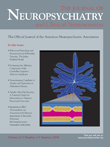β Oscillations as the Cause of Both Hyper- and Hypokinetic Symptoms of Movement Disorders
To the Editor: Clinical manifestations of extrapyramidal movement disorders are usually divided into two main categories: hyperkinetic (i.e., tremor, athetosis, chorea, and ballism) and hypokinetic (i.e., akinesia, bradykinesia, and rigidity) symptoms.
Despite the different pathological bases of these symptoms, simultaneous emersion of both kinds of symptoms in a single case (like coincidence of rigidity and tremor in a patient with Parkinson`s disease) and changing the general appearance of disease from hypo- or hyperkinesia to another group of symptoms suggests a similar origin for both groups of symptoms. With regard to the antikinetic effect of β band oscillatory activity, 1 all pathological procedures involving the basal ganglia can represent hypokinetic features if they persuade the basal ganglia network to oscillate at β band. Aggravation of hypokinesia caused by stimulation of subthalamic nucleus at 15 Hz through deep brain stimulation electrodes also supports the theory. 2 Simultaneous reduction of β band power and intensity of tremor during voluntary movements, 2 finding a roughly linear relationship between the amount of high frequency (at β band) synchronized activity and the patient’s tremor, and the fact that tremor cells are usually localized in the regions that also contain cells with a high frequency oscillatory component provide strong support for the role of β frequency in producing hyperkinetic symptoms. 3 Oscillation at β frequency is persistent and synchronized among large populations of neurons and caused by the alteration in network structure. Conversely, activity at tremor frequency is transient, synchronized just in small neuronal populations, and caused by the intrinsic membrane properties of neurons. 4 Therefore the tremor site will vary according to the site of the small neuronal assembly, which temporarily synchronizes at β frequency.
Analyzing frequencies other than β band generated at some stage in movement disorders will help us improve our knowledge about how basal ganglia oscillatory activity transforms into hyperkinetic movements. We cannot discuss the oscillatory activities causing hyperkinesias in ballism and Huntington’s disease because chorea usually disappears with the induction of anesthesia; however, dystonia in L -dopa-induced dyskinesias is a hyperkinetic symptom that appears even under anesthesia and can be considered independent of cortical activity. Replacing the 4 Hz–7 Hz oscillatory activity seen in Parkinson’s disease with the 7 Hz–10 Hz seen in L -dopa-induced dyskinesias can change the hyperkinetic manifestation of disease from tremor to dystonia and offers a relationship between output frequencies of basal ganglia and hyperkinetic manifestations of disease. Although the peak at β band disappears in the power spectral density of subthalamic nucleus neurons affected by dopamine in L -dopa-induced dyskinesias, it is still present and can be recorded in the contralateral cortex. 5
According to these observations we can conclude that neuronal synchronization at β band directly leads to the production of hypokinesia and creates a necessary background for hyperkinesia to emerge. Transient appearance of oscillatory activities in other frequencies can result in hyperkinetic movements only when they coincide with β band activity. Since the topography of motor cortex is preserved in the skeletomotor circuit, different sites of involuntary movements can be explained by different sites of oscillations in the basal ganglia.
1. Brown P, Williams D: Basal ganglia local field potential activity: character and functional significance in the human. Clin Neurophysiol 2005; 116:2510–2519Google Scholar
2. Levy R, Ashby P, Hutchison WD, et al: Dependence of subthalamic nucleus oscillations on movement and dopamine in Parkinson’s disease. Brain 2002; 125:1196–1209Google Scholar
3. Levy R, Hutchison WD, Lozano AM, et al: High-frequency synchronization of neuronal activity in the subthalamic nucleus of parkinsonian patients with limb tremor. J Neurosci 2000; 20:7766–7775Google Scholar
4. Raz A, Vaadia E, Bergman H: Firing patterns and correlations of spontaneous discharge of pallidal neurons in the normal and the tremulous 1-methyl-4-phenyl-1,2,3,6-tetrahydropyridine vervet model of parkinsonism. J Neurosci 2000; 20:8559–8571Google Scholar
5. Alonso-Frech F, Zamarbide I, Alegre M, et al: Slow oscillatory activity and levodopa-induced dyskinesias in Parkinson’s disease. Brain 2006; 129:1748–1757Google Scholar



